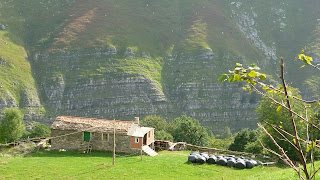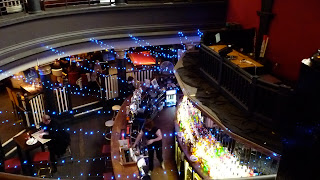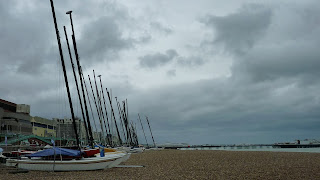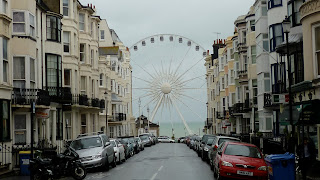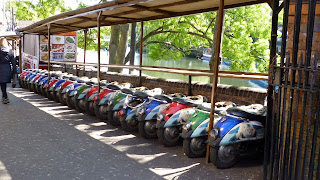If you mention Navarra, most foreigners will probably look at you with a blank stare. But if you go on to talk about Pamplona, then a sudden look of recognition sets in and they will probably go "Oh yes, San Fermin!" Yes, the famous (or infamous?) Running of the Bulls is what is known internationally, but there is more to Navarra than just that event. One cold weekend we set out to find out a little bit more....
Pamplona
Also known as Iruña (the Basque name, not to be confused with the city of Irun) is the capital of Navarra and surrounded by mountains. A large percentage of the population of Navarra is located here in the valley. We only got to explore a bit of the city centre, but liked the mix of old architecture and alternative areas.
We walked to the citadel and entered the beautiful green park. The grounds are amazing and the sunshine made it even more relaxing. What a fantastic way to spend a morning, surrounded by the old walls and walking around or sitting and feeding the animals!
The entrance to the citadel

Local residents of the park
The streets were beautiful and there are various parks and lovely greenspaces located in the heart of the city. I'm a fan of just taking a stroll and enjoying the scenery, rather than wander the commercial zones, but to each his/her own!
Changing autumn colours
There is no ignoring the international presence of San Fermin, and despite not really understanding the need to race in front of fiercely strong and dangerous animals speeding towards you, a visit to the capital isn't complete without seeing some of the famous sites.
Can't hide the truth--there are falls and close encounters!
The city hall, where the festivities begin each year each July.
Estafeta Street...imagine bulls and humans speeding down this straightaway....
...then turning (or trying to turn) the famous corner!
The bull ring
An example of the fences put up during San Fermin--heavy steel bases set into the concrete, then reinforced with strong beams....
Ernest Hemingway--loved San Fermines and immortalized them in his book, "The Sun Also Rises." This statue is in Café Iruña, one of his favourite places in Pamplona. He spent a lot of time in the city and fell in love with the festival, and you can visit the places he spent time in around town.
Estella
Aside from the capital, there are many towns to visit in Navarra. Upon recommendation, we stopped in Estella, which is just a short jaunt from Pamplona.
A view of the city
Church of San Juan in the Plaza de los Fueros--we stumbled upon a local festival!
Stalls upon stalls of Navarran food were being sold. One of which is chistorra, a cured sausage usually made of pork, but also can be pork-beef mix.
This stall was actually basque, but were busily selling chistorra (and other things) in pita-like things that they were making on the spot.
The Ega river runs through town
Olite
When we asked people to recommend places to visit for our weekend, they said Olite without hesitation. The royal palace/castle there is a must-see, they said, so of course we had to go check it out ourselves. It was well worth it and one of the prettiest castles I've seen, and this is coming from someone with no knowledge of constructions like this. :) It's considered one of the 7 Medieval Wonders of Spain and one of the best examples of Gothic architecture around. The town itself was pretty, though there were few folk about on a cold Sunday afternoon....

The entrance to the new part which is open to visitors
The old part of the castle, which is now a parador (national hotels which are historically/culturally significant buildings or areas).
View of the castle from a square in the centre of town
Beautiful towers and connecting walls separate the palace into many areas. You can get an audioguide which explains the rooms and sections in detail.
Check out the royal views!
In a weekend we barely got to know Navarra, and only got to see a tiny part. For next time, we have the Irati forest pending, and the northern region, especially the Pyrenees!
























